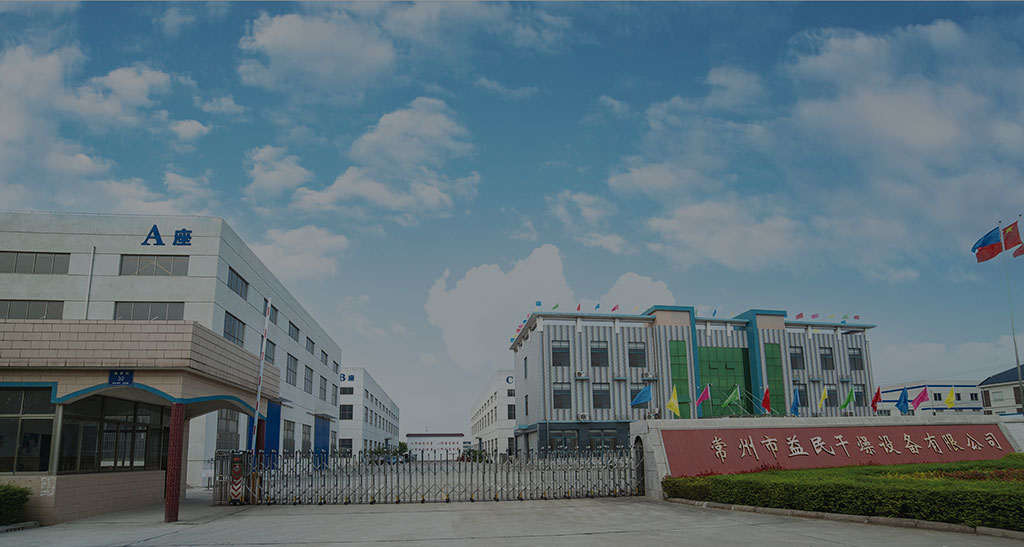- Sodium chloride dryer


Sodium chloride is an inorganic ionic compound with the chemical formula NaCl, a colorless cubic crystal or fine crystalline powder, and has a salty taste. The appearance is white crystalline, mainly sourced from seawater, which is the main component of table salt. "The stability is relatively good, and its aqueous solution is neutral. In industry, the method of electrolyzing saturated sodium chloride solution is commonly used to produce hydrogen, chlorine, caustic soda (sodium hydroxide), and other chemical products (commonly referred to as the chlor-alkali industry). It can also be used for ore smelting (electrolysis of molten sodium chloride crystals to produce active metal sodium), for medical use in preparing physiological saline, and for daily use in flavoring.".
Working principle
The wet material is continuously added to the first layer of drying plate on the upper part of the dryer from the feeder, and the rake arm with the rake blade rotates to make the rake arm rotate to make the rake blade continuously turn over the material. The material flows through the surface of the drying tray along an exponential spiral, and the material on the small drying tray is transferred to the outer edge, and falls to the outer edge of the large drying tray below. On the large drying tray, the material moves inward and falls into the next small drying tray from the intermediate discharge port. Large and small drying trays are arranged alternately up and down, allowing materials to continuously flow through the entire dryer. A hollow drying plate is filled with heating medium in the form of saturated steam, hot water, and heat transfer oil. The heating medium enters from one end of the drying plate and exits from the other end. The dried material falls from the last layer of the drying plate to the bottom layer of the shell, and is then transported by the rake blade to the discharge port for discharge. Moisture escapes from the material and is discharged through a moisture discharge port located on the top cover. The moisture of the vacuum type disc dryer is extracted through a vacuum pump port located on the top cover. The dry material discharged from the bottom layer can be directly packaged. By adding auxiliary machines such as fin heaters, solvent recovery condensers, bag filters, dry material backmixing mechanisms, and induced draft fans, it is possible to improve its drying capacity, dry paste and heat sensitive materials, easily recover solvents, and perform pyrolysis and reaction operations.
Application:
Drying, pyrolysis, combustion, cooling, reaction, sublimation: organic chemical products, inorganic chemical products, medicine, food, feed, fertilizer.
Technical characteristics
(1) Drying tray
1. Design pressure: generally 0.4MPa, up to 1.6MPa
2. Maximum service pressure: generally ≤ 0.4MPa, up to 1.6MPa
3. Heating medium: steam, hot water, and heat transfer oil. When the drying plate temperature is 100 ℃, use hot water to heat it. When the temperature is between 100 ℃ and 150 ℃, use ≤ 0.4MPa saturated steam or superheated steam to heat it. When the temperature is between 150 ℃ and 320 ℃, use heat transfer oil to heat it. When the temperature is above 320 ℃, use electricity, heat transfer oil, molten salt, and other methods to heat it.
(2) Material transfer system
Spindle speed: 1-10 RPM, electromagnetic or variable frequency stepless speed regulation.
2. Rake arms: There are 2 to 8 rake arms fixed to the main shaft on each layer of drying plate.
3. Rake blade: It is hinged on the rake arm and can float up and down with the disk surface to maintain contact. There are various forms.
4. Rolling: For materials that are prone to caking and need to be broken, adding a roller at an appropriate location can strengthen the heat transfer and drying process.
(3) Housing
Available in three types: atmospheric pressure, airtight, and vacuum
1. Atmospheric pressure type: cylindrical or octagonal prism, with two structures: integral and split. The main heating medium inlet and outlet pipes can be inside and outside the shell.
Closed type: cylindrical shell, capable of withstanding an internal pressure of 5Kpa. The main heating medium inlet and outlet pipes can be inside the shell or outside the shell.
Vacuum type: cylindrical shell, with a design pressure of 0.1MPa. The main heating medium inlet and outlet pipes are inside the shell.
(4) Air heater
Generally, it is used when the evaporation capacity is large to enhance the drying efficiency.





